The U.S. Customs and Border Protection (CBP) issued a Withhold Release Order on Thursday on silicon-based products made by Hoshine Silicon Industry Co. The Chinese company is located in the Xinjiang province, an area under global concern for forced labor practices. The Biden Administration issued the ban as a reaction to discussions at the G7 Summit in the UK earlier this month, where country leaders united to stand against products using forced labor entering the global supply chain.
Hoshine produces industrial silicon used in automotive and electronic products, as well as a small amount of polysilicon products that would be relevant to the solar industry. The company mostly distributes its silicon domestically, and Reuters reported the impact of this U.S. import ban would be “limited.” Several Chinese polysilicon firms within Xinjiang do source silicon from Hoshine though.
Around 80% of the world’s polysilicon supply comes from China, with nearly half coming out of the Xinjiang province.
Reportedly, CBP officials confirmed that this ban would include solar panels containing Hoshine materials. But Ginger Faulk, a partner at global law firm Eversheds Sutherland LLP, who represents multinational companies in matters involving U.S. government regulation of foreign trade and investment, indicated that U.S. importers had already been moving away from Hoshine, and therefore the ban would only affect a fraction of U.S. imports. More importantly, today’s announcement does allude to future, more widespread bans on polysilicon-related products coming from the Xinjiang region, not just Hoshine.
“An expansion of the CBP detention order to cover other silicon and polysilicon suppliers in Xinjiang would have material pricing pressure impacts globally because close to half of the world’s solar-grade (high-purity) polysilicon comes from Xinjiang,” Faulk said. “In line with today’s Hoshine order, such an expansion might cover imports of the polysilicon ingots and wafers and solar cells used by domestic solar module makers, as well as finished solar panels imported into the United States. The resulting impacts on the U.S. solar module supply chain would likely impact solar module pricing worldwide. Such an action could even jeopardize the financial viability of existing and current solar projects, in some cases affecting the achievement of climate change goals.”
CBP identified about $6 million in direct imports of Hoshine material to the United States and about $150 million linked to other solar equipment using Hoshine material in the last year. In comparison, SEIA said the United States imported more than $8 billion in solar cells and modules in 2020 — so the Hoshine ban impacts a very small portion of the U.S. market.
CBP has been investigating allegations of forced labor within the U.S. supply chain and has issued bans on other Xinjiang-produced products, including cotton, tomatoes and seafood. The United States, and many other international democracies, believe that China is forcing those in the mostly Muslim Uyghur population into labor camps in the Northwest portion of the country. The situation is being described as an ethnic and religious genocide of the Uyghur people.
“The People’s Republic of China’s forced labor practices run counter to our values as a nation and expose American consumers to unethical practices. They also leave American businesses and workers to compete on an uneven playing field by allowing firms to gain advantage over their competitors by exploiting workers and artificially suppressing wages,” the White House said in a statement. “The United States will not tolerate forced labor in our supply chains and will continue to stand up for our values and for U.S. workers and businesses.”
In addition to the Hoshine product import ban, the Dept. of Commerce has added Hoshine and four other silicon producers from Xinjiang to its entity list, which would prevent U.S. companies from working with them or selling them products. Those companies include: Daqo New Energy; East Hope Nonferrous Metals; GCL New Energy Material Technology, and Xinjiang Production and Construction Corps (XPCC).
Daqo, East Hope and GCL were listed in the Top 6 polysilicon manufacturers of 2020, and the expectation is that these three companies along with Tongwei (Chinese firm in the Sichuan Province) will be the Top 4 polysilicon producers by 2022.
Last year, advocacy group SEIA asked solar companies to sign a pledge against using forced labor in the solar supply chain. The group developed a supply chain traceability protocol for materials used in solar modules to help companies track from where their products are coming.
“Unethical labor practices run against everything we stand for as an industry and are counter to our values,” said Abigail Ross Hopper, president and CEO of SEIA. “It’s on us to be vigilant and take steps to ensure the solar industry is free of forced labor practices.”
Story updated 06/25 with additional information from SEIA.
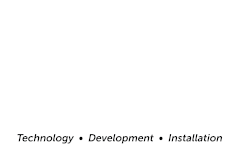
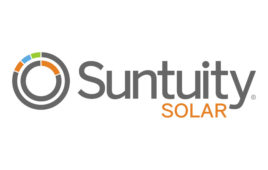
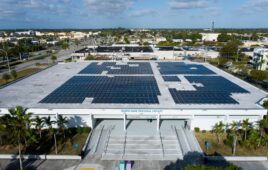
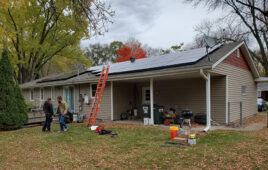
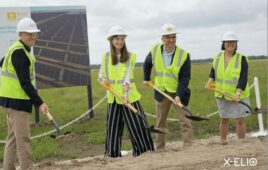
“Around 80% of the world’s polysilicon supply comes from China, with nearly half coming out of the Xinjiang province.”
There’s news all over the place about REC and their facility in Moses Lake Washington that is reported to use almost all hydroelectric generation to power the plant, then the REC facility closed down, then Violet Power was going to partner with REC and make new, robust, long lasting solar PV panels with a 50 year warranty, then that was canceled. Then there’s talk of another company buying out REC in the U.S.. All this braggadocio, about how green this silicon foundry is, how it can be run for a couple years before it is shutdown for maintenance and how green it is by using hydro-generated electricity to run the plant. What’s missing here? Why isn’t this plant up and running, making silicon ingots and dies 24/7 for two year runs at a time? As far as infrastructure the U.S. has a silicon foundry that can supply all of the U.S. silicon needs, what’s the problem? Why does the U.S. have IC shortages? Why is it still attractive for American Corporations to off shore operations and depend on someone else’s materials supply chain?
Even under Trump, it has been called out the U.S. needs to form better supply chains and not have important grid and electrical control and protection devices made in ‘other’ countries, under NERC should be manufactured right here in the U.S. instead of China, Russia and Italy. The U.S. needs to harden the grid from HESS and CME events, is this being done, or is it gone with the last administration?
““Unethical labor practices run against everything we stand for as an industry and are counter to our values,” said Abigail Ross Hopper, president and CEO of SEIA. “It’s on us to be vigilant and take steps to ensure the solar industry is free of forced labor practices. Dozens of companies have already stepped up to sign our pledge and we’re calling on the entire industry to join us.””
All I see here is the same ol’ same ol’. Instead of wars for oil, it will be wars for cobalt, wars for lithium, wars for nickel, wars for purified silicon and silicon ICs. What I see as unethical, is allowing manufacturing to go to other countries and leaving this country wanting for jobs, economic prosperity and manufacturing ability, right here at home.